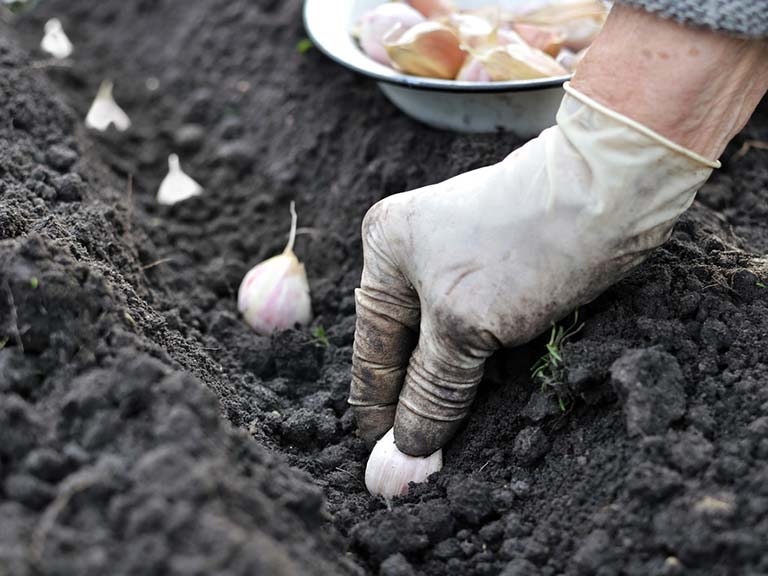
Planting garlic in the winter allows you to get the crop in mid-summer and in time to prepare the product for storage. It is very important to choose the right time. It should be guided by both standard terms for culture, and the lunar sowing calendar.
The climate of the Moscow Region in the last autumn months is favorable for planting in the winter, however, weather forecasts are better to take into account.
Content
Landing time
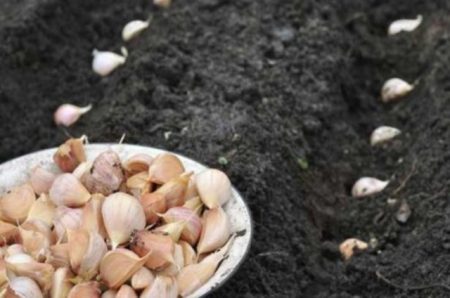
Before the first frosts, a kind of rooting, strengthening should take place, the plant will have time to accumulate strength for the future "winter hibernation". In the Moscow region climate, these processes require from 40 to 50 days.
Garlic planted too late in the ground will sprout, however, its yield will be less. If green shoots appear before frosts, the plant will not survive.
You can focus on the last week of September or in mid-October. Meteorological forecasts are inaccurate in such a long term, but you can calculate the time based on the general situation during the year. The later the high summer temperatures stabilized, the later the freezing will begin. With rare exceptions in the middle lane, this principle always works.
For landing in the ground there are favorable and forbidden days according to the lunar calendar, which are also better to adhere to. Annually the dates are shifted, so it is advisable to check the calendar. In 2018, it is recommended to refrain from sowing on September 16, October 1, 16, and 29. The most favorable time will be the period from October 10 to 13. Landing these days can be done both in open and in closed ground.
Basic landing rules
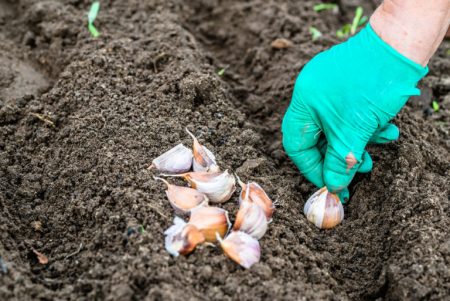
Garlic cannot be attributed to crops that are difficult to care for; it almost always sprouts and produces crops. However, in order to get large heads with a small number of meaty slices that will be stored for many months, you need to carefully approach the choice of variety and place. These factors have the greatest impact on the final result of planting in the winter.
What to plant: variety selection
The whole variety of species and varieties can be conditionally divided into those that will give the arrow as a result and those that do not give similar shoots with seeds. If there is no purpose to get seed from your own garden, you can choose non-shooting garlic, it is easier to care for it, it is better stored. Arrows are useful not only from the point of view of obtaining seeds, but also as a food product, namely as a seasoning. The abundance of vitamins, the original smell and bright taste are appreciated by gourmets and fans of authentic Russian cuisine.
Well tolerate frost varieties:
- Sail;
- Novosibirsk;
- Broadleaf;
- Dungan local;
- Gribovsky 80.
Varieties brought from Greece and Italy are becoming popular. In conditions of a rather harsh and long winter, they may not survive or yield a significantly lower yield. Therefore, it is better to opt for regional varieties that have been developed specifically for winter crops in the Central region of Russia.
When choosing between varieties, it should be understood that the number and weight of cloves will also differ. Shooting species are distinguished by a small number of large fractions. Non-shotguns have a larger number of denticles, each of which is medium in size.
A special category of varieties is breeding. They have the best properties of productivity and frost resistance, garlic is stored for a long time. It will be very difficult to get high-quality seed from arrows, as well as to find the seeds themselves, since they are not too common.These varieties include:
- Moscow Region;
- Bryansk;
- Breitovsky.
Where to plant: search for a place
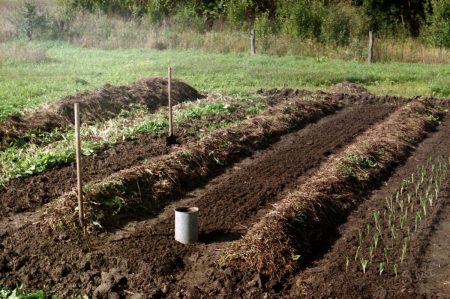
To get a rich harvest, you must carefully choose a landing site. Primary requirements:
- lack of waterlogging;
- neutral acidity;
- sufficient lighting;
- a small amount of organic fertilizer.
If the area is swamped in spring, groundwater lies close under it, it is not suitable for planting in the winter. You should also refuse to apply manure and other organic fertilizers to a pre-selected site. High light levels will be an advantage. However, garlic can give good shoots on shaded beds. You can compensate for the lack of light and heat by reducing the density of plantings.
It is important to observe crop rotation. The crop feels best on beds after plants that actively absorb nitrogen from the soil. These are all types of cabbage and greens, pumpkin, tomatoes, bell pepper and eggplant. The least favorable option is planting after any root crop.
Landing technology
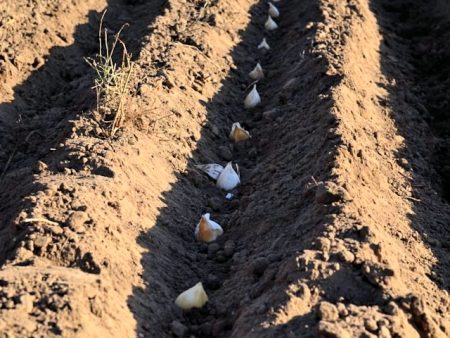
The first and one of the most important stages is the selection of seed. If sprouts that have already been sprouted are used, they should be carefully examined and discarded damaged. For planting, it is necessary to use the largest specimens, preferably purchased in the same area where the plant will then be grown. If the variety is without arrows, use only the outer lobes. As prophylaxis of common diseases, etching with a solution of potassium permanganate in a concentration of 0.06% can be used.
The soil should be treated in the same way. If the acidity is high, ash fertilizers can be applied to compensate for the negative effects. The soil must be loosened, because excessive compaction will not allow the lobes to take root and then germinate. Make one hole on a square measuring 10 * 15 centimeters, sprinkle it with compost for a third.
If severe frosts are predicted, it is imperative to mulch the soil to a depth of 5-7 centimeters.
If the soil is too dense and heavy, for example, loamy, it is necessary to introduce softer and loose structures, for example, sand or fertile mixtures. Digging the bed in this case is necessary to a depth of 25 to 35 centimeters. This will allow the roots to fully develop and not to stop growing.
Garlic of winter varieties is not afraid of excessive deepening. The upper layers of the soil freeze much faster, so too high planted wedges can die. The optimal depth is from 8 to 13 centimeters. After planting, you should sprinkle the bed with light fertilizer, for example, dry humus, you can lay straw, old leaves. Such simple techniques can further protect crops from freezing.
Proper care
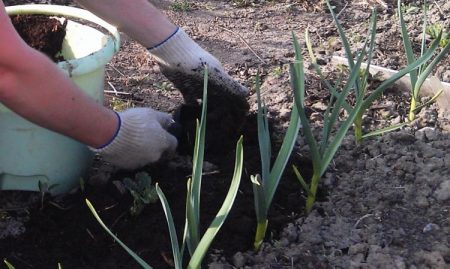
Immediately after planting, neither watering nor top dressing is required. A large amount of moisture will only increase freezing. If there is little snow before severe frosts, you can manually increase the layer on the beds themselves to create additional protection from the cold.
In the spring immediately after the first shoots it is necessary:
- weed;
- loosen up;
- water abundantly.
Watering continues until mid-July in the suburbs. Top dressing should be carried out after the first true leaves appear in an amount of about 3-4 pieces. The following solution works well: dilute 1 spoon of urea in a bucket of water, insist for half an hour, pour at the rate of 1 liter per 2 square meters.
Growing winter garlic is not difficult in a temperate climate near Moscow. The correct choice of variety and soil preparation, subsequent top dressing will increase the yield by 30-40 percent.

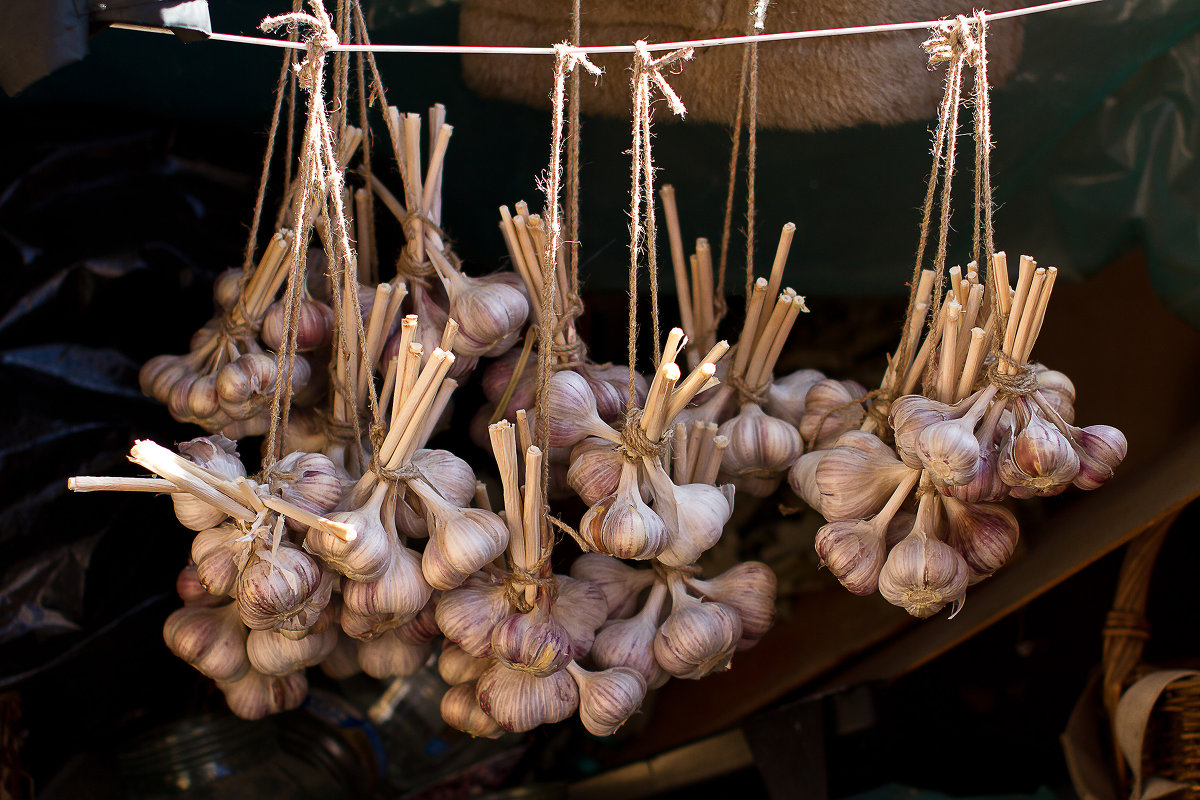 Methods for storing garlic in the winter at home
Methods for storing garlic in the winter at home Processing garlic before planting in the winter: soaking garlic and tillage
Processing garlic before planting in the winter: soaking garlic and tillage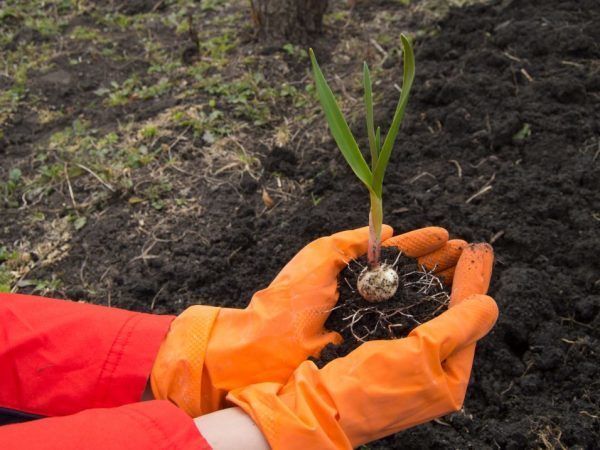 Fertilizers when planting garlic in the fall: how to fertilize the soil
Fertilizers when planting garlic in the fall: how to fertilize the soil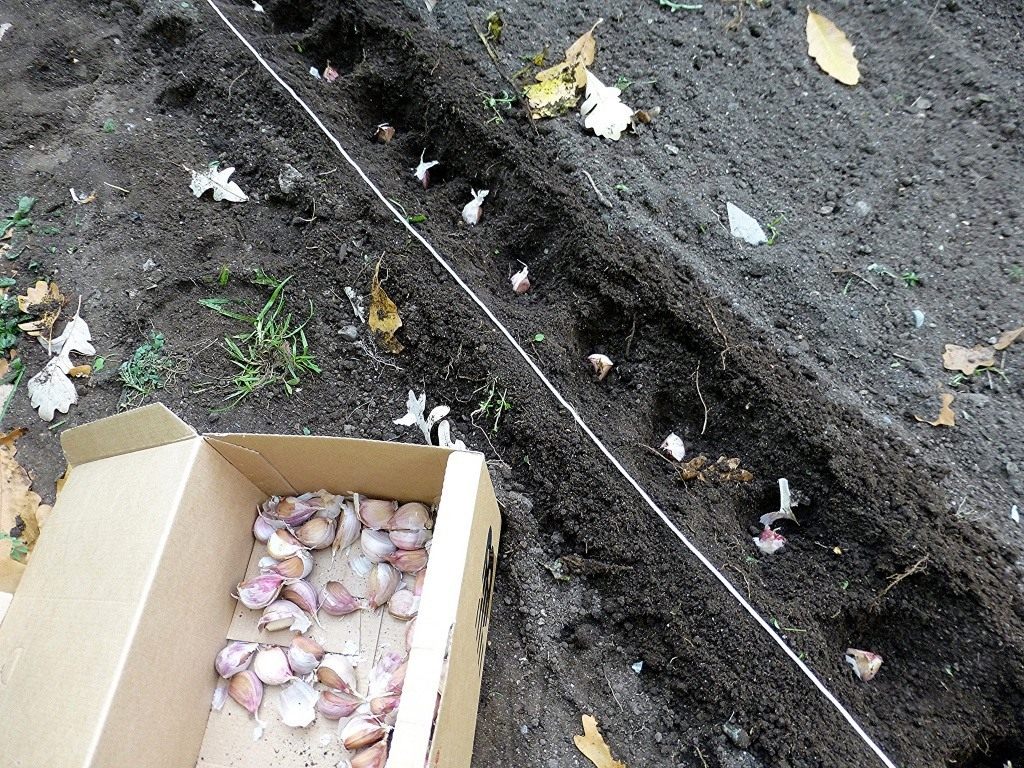 Features planting garlic in the winter in the fall
Features planting garlic in the winter in the fall